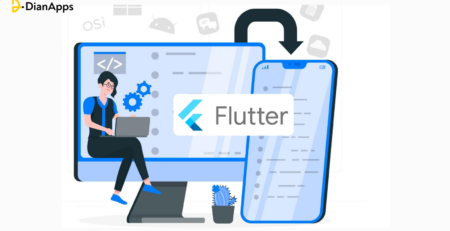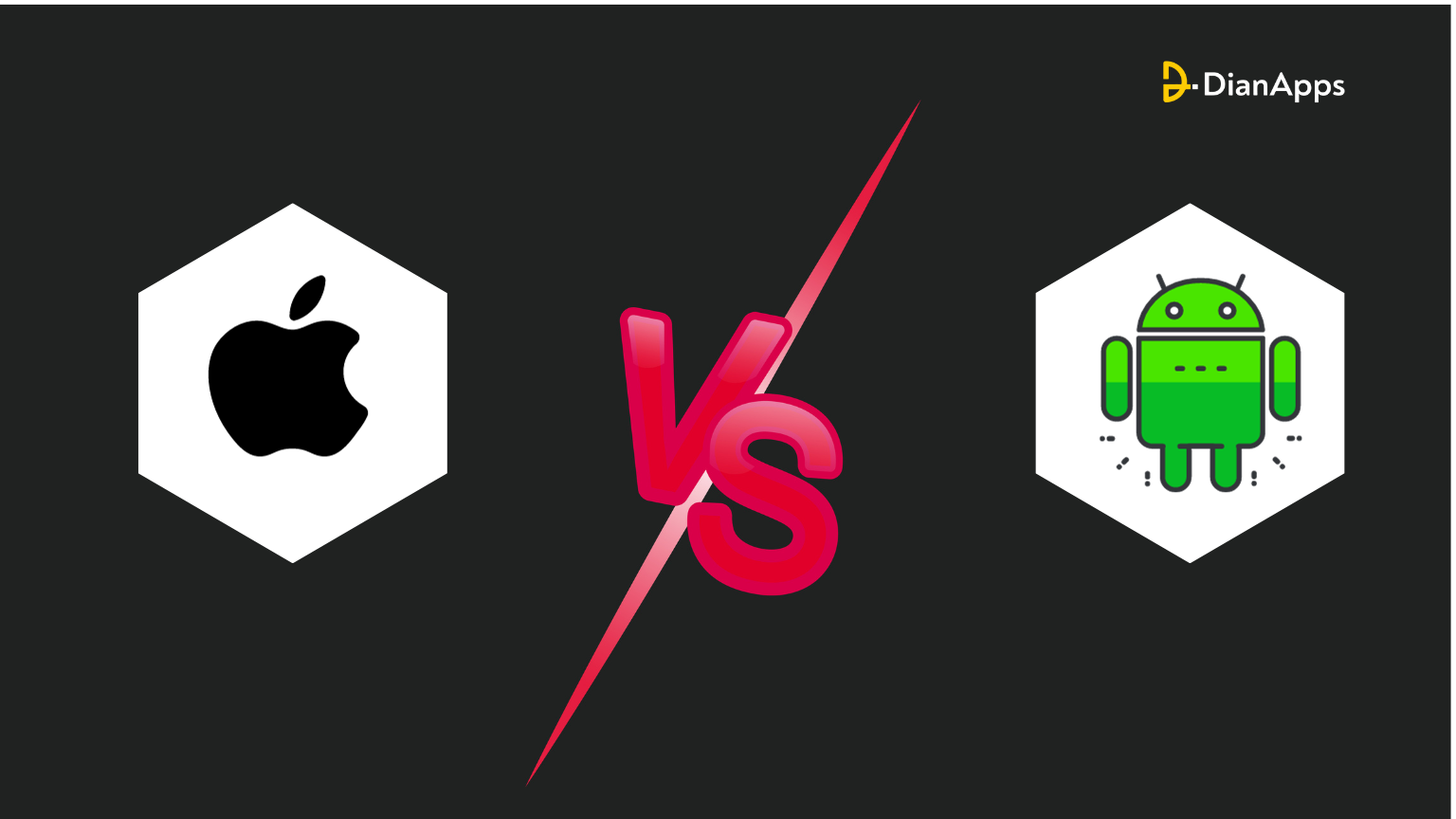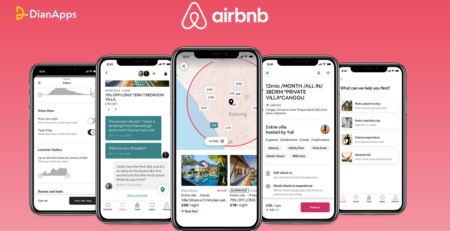Flutter vs React Native – Which One is Better in 2024?
The app development industry has boosted tremendously in 2024. As per records, it generated a value of $935 billion in revenue in the marketplace. However, whose contribution led the industry to gain such huge profit?
Enter Flutter and React Native app development framework. An open-source UI toolkit that creates intuitive and user-friendly apps for both iOS and Android devices through its single code-base functionality. Nevertheless, both frameworks are completely different and have their own set of user base and developer fame groups.
Flutter vs React Native, which one is better for you in the current era of authentic app development? This blog highlights the comparison between these two awesome frameworks.
Let’s begin comparing!
What is React Native?
React Native was introduced in the year 2015 by the Facebook giant. The framework is built using JavaScript programming language and has native capabilities to develop iOS and Android apps but with its single-code base feature add-on. React Native app development services have already been used in many popular brands including, Shopify, Instagram, Pinterest, etc, and have millions of downloads globally.
Advantages of React Native
-
Modular Architecture
React Native’s modular architecture allows developers to upgrade and update apps instantly. This feature is very useful for QA engineers also because it takes less time to understand program logic and create appropriate test scenarios.
Additionally, it allows other developers to build further or make some changes to someone else’s project.
-
Simplified UI
It has a straightforward and less complicated user interface, making it very easy to create both simple and complex UI designs. So the apps developed by React Native offer a more seamless user experience, and responsive UI and also take less time to reload.
-
Testing Tools
React Native offers a wide range of testing tools to enhance the react native app development process. Some of them include:
- Chai
- Mocha
- Zest
- Enzyme
It allows developers to write bug-free codes which in return will enhance the credibility and performance of the end product. Along with these testing tools, it also offers static-type checkers like Flow and TypeScript to identify certain problems before you even run your code. Primarily these are recommended for large code bases and can improve the developer workflow by adding features like auto-completion.
-
Large Community Support
React Native has large community support of developers and this is one of its biggest advantages. The sole motive of this support is to encourage the developers to connect with other fellow developers if they face any type of query or difficulty during the development process.
-
Save Time & Money
React Native allows the reusing of code which ultimately saves you additional code-writing time. Also working on one programming language has its own advantages. Additionally, if the developers want they can easily switch between different platforms according to their needs.
Disadvantages of React Native
-
Hard Debugging
Mobile applications made using React Native are very hard to debug. Generally, this process is difficult because these apps are made by using JavaScript, C/C++, etc. In order to overcome this issue, React Native developers can use debugging tools like Flipper to manage the whole process.
-
Immature Framework
With continuous advancements and updates in this framework, it becomes very difficult for the developers to adjust and adapt to those changes. So in the quest to become faster, this framework loses its credibility and becomes too immature for Android and iOS apps. Furthermore, in comparison with native apps, its flexibility is very less.
-
Not Suitable For Complex Interfaces
If your mobile app has complex features such as multiple screen transitions, animations, and interactions, then React Native app development services might not be the right choice for you.
Overall mobile apps that have complex gestures and features are not built using React Native because iOS and Android apps have a unified API which is different from each other.
What is Flutter?
Flutter is another cross-platform framework that is used to develop natively compiled applications for iOS, Android, web, and desktop by using the same codebase. Apps made with Flutter are intuitive and that’s why Flutter app development services have become a popular choice for big tech companies as well such as Alibaba, eBay, and Google Assistant.
Advantages of Flutter
-
Use of the Same Codebase
Just like React Native, the Flutter app development framework uses the same code base to develop apps that run smoothly on both iOS and Android mobile apps. Flutter also gives a natively complied look and feel that makes your app appear exclusive and user-friendly.
-
Pre-Built Components and Widgets
These pre-built components are another core advantage of Flutter. These allow the developers to customize the UI according to the application.
Furthermore, it has a wide variety of widgets based on Google that is high-quality and performs better than other cross-platform frameworks’ collections of widgets. So, there are two types of widgets in Flutter i.e. stateful and stateless widgets which you can use to create beautiful and interactive Flutter apps.
-
Adapt To Different Screen Sizes
Making apps that work smoothly on different screen sizes from long, and narrow to almost square-shaped interfaces is not easy as the developers make it. Flutter’s declarative nature and layout system make it very seamless to write apps so they easily fit different layouts.
-
Own Rendering Engine
Do you know that Flutter has its own rendering engine? So it uses Skia for rendering itself onto a platform-provided canvas. Also, because of Skia, UI built-in Flutter can be launched virtually on any platform. As a whole, it helps to simplify the development process to a great extent.
-
Hot-Reload Feature
Flutter’s “Hot-reload” feature allows the developers to see the applied changes in real-time. In a nutshell, it allows developers to pause code execution, make changes to the code and continue coding from the same place.
Disadvantages of Flutter
-
Dart language
Though Dart is a new programming language that’s why it becomes necessary for the developers to learn this language first. So, This is an additional requirement that must be fulfilled to proceed with Flutter app development.
-
Weighty Apps & Limited Ecosystem
Apps created by using Flutter are inherently larger than apps created natively. This drawback sometimes becomes a very big problem for developers.
Although there are many improvements made by the release of Flutter 2 but still Flutter’s ecosystem is comparatively limited. For instance, JavaScript libraries that other frameworks can easily utilize, can’t be implemented and imported into Flutter apps quite as easily.
Now that you know clearly about the advantages and disadvantages of both of these frameworks, it’s time to look at some of the key differences between these two.
Key Differences between Flutter vs React Native
Programming Language
React Native uses JavaScript which is the first programming language that enabled dynamic web development. On the other hand, Flutter uses “Dart” as its principal programming language. It was a new language that was introduced in 2011 and is up to two times faster than JavaScript.
In the performance aspect, both of them use different programming languages which means differences in their performance will also vary accordingly.
Mobile Performance
In React Native, source code execution is accomplished by bridging from the Javascript code to the device’s native environment. Significantly this bridge acts as an interpreter that translates JavaScript code into the native programming language. But unfortunately, this bridge takes additional time and resource allocation.
On the contrary, Flutter complies with x86 and ARM native libraries without other layers. That’s why the code will consume fewer resources and execute on time as well.
Time To Market
As already mentioned Flutter and React Native are both cross-platform app development frameworks which are why these allow the reusing of code instead of making separate apps for different platforms.
React Native is an older platform than Flutter and has a large community that produces ready-to-use packages and libraries. Although Flutter has also huge support from Google it is a fact that it is launched after React Native.
So in this time-to-market segment, both of these frameworks perform pretty well in the mobile app development procedure.
Learning Curve
The learning curve of both of these frameworks depends totally on their respective programming languages. Most developers are already familiar with JavaScript which makes it easier for them to code in React Native. However, Dart is a new programming language so developers familiar with this can go for Flutter.
Documentation
Both React Native and Flutter come with official documentation guides to get started. But with respect to React Native, it only has little information about set-up and command line tools.
On the contrary, Flutter has detailed information about the platform and IDE for both iOS and Android operating systems. So Flutter has more comprehensive and detailed documentation when compared to React Native.
Conclusion
As a whole, we have compared these frameworks on different parameters. And obviously, there is no clear winner because both of these development technologies have their own merits and demerits.
You can also ask a reliable mobile app development company because each project is unique, and choosing the right frameworks depends solely on your project and business demands.




